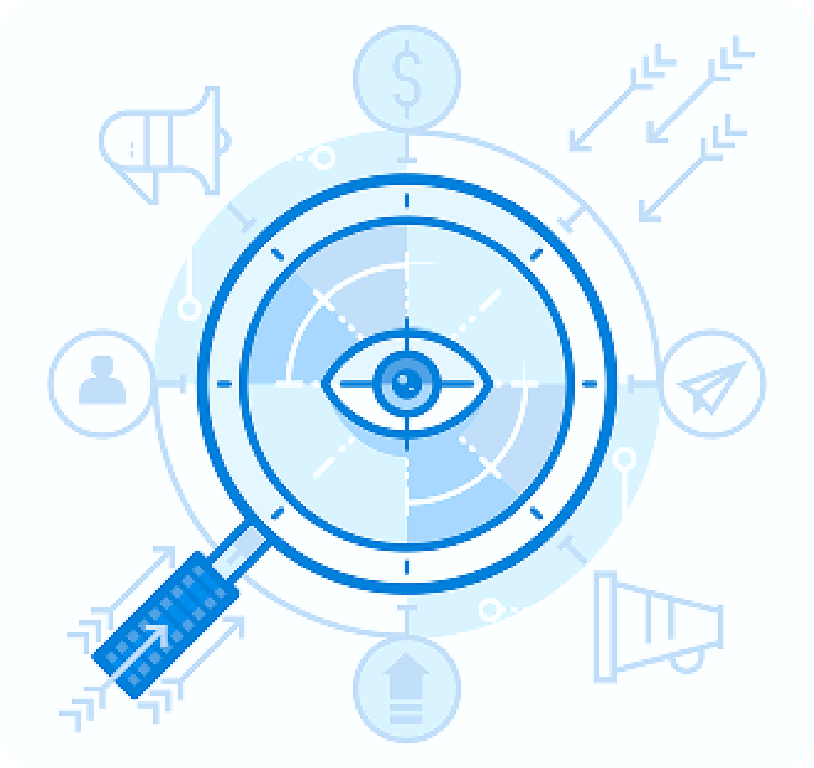Can you trust that your data really tells the full story about risk and liability?
We guide organizations to turn scattered information into governed assets that strengthen audit readiness and business resilience. Our approach inventories, evaluates, and acts on data across on‑prem and cloud stores with minimal disruption to users.
We uncover dark data—orphaned, duplicated, obsolete, or trivial items—and enable defensible deletion to lower storage costs and shrink the attack surface. We pair metadata governance with legal holds, quarantine, role‑based access, and audit trails to protect critical records and prove stewardship.
Classification uses keywords, concept matching, and ML to speed outcomes. We favor manage‑in‑place methods to avoid risky copies and to accelerate time to value. We also weigh SaaS speed and scale against on‑prem control and data residency needs in the United States.
Key Takeaways
- We make discovery and classification practical to reduce risk fast.
- Dark data removal cuts costs and limits exposure.
- Metadata and role controls enforce secure access and auditability.
- Manage‑in‑place speeds deployment and lowers migration risk.
- SaaS and on‑prem choices trade speed for control and residency.
- AI-assisted classification reduces manual work and boosts accuracy.
Why file analysis matters now for data security and regulatory compliance in the United States
Speed and trust matter: teams must map and secure documents so evidence is auditable and actionable.
Organizations face tighter regulatory scrutiny and higher penalties. A rapid, scalable approach to inventorying unstructured content gives clear business value: lower risk, reduced storage costs, and faster response to inquiries from regulators and auditors.
User intent and business value: turning unstructured files into compliant, protected assets
When users search, share, or store information, they create risk and opportunity. We connect that intent to measurable outcomes: improved protection, faster audits, and fewer incident responses.
From dark data to defensible deletion: optimizing files, storage, and costs
Data mapping reveals misplaced, orphaned, duplicated, obsolete, or trivial items. Identifying these items enables defensible deletion, which immediately cuts storage spend and narrows the threat surface.
Key terms clarified
- file analysis — inspect and act on unstructured content where it lives (metadata + content).
- Auditing — record who accessed or changed items to support reporting and investigations.
- Integrity monitoring — baseline state, detect drift, and alert on unexpected changes.
- Governance — policies, roles, and lifecycle rules that enforce consistent behavior.
- Manage‑in‑place — analyze without moving items to reduce disruption and transfer risk.
Core protections include role‑based access, policy enforcement, and encryption at endpoints. These controls help ensure only authorized people reach sensitive information when needed.
Data efficiency, risk mitigation, and governance: core outcomes of modern file analysis
Visibility across repositories lets teams prioritize risk and act where it reduces cost and exposure fastest. We map data in place across on‑prem and cloud stores, flagging dark items and high‑value assets.
Data mapping and optimization locates information, highlights duplicates and stale records, and identifies clear optimization opportunities. This step often yields quick ROI through defensible deletion and targeted archive actions.
Reducing unauthorized access through policy controls and remediation
We implement remediation workflows that fix excessive permissions, apply role‑based access, and enforce policy controls without slowing business processes. Continuous auditing records activity and changes so executives can demonstrate oversight.
- Rank repositories by risk and value to guide staged remediation.
- Enforce roles and policies to reduce unauthorized access while preserving productivity.
- Protect endpoints with encryption and in‑place controls to prevent accidental movement or deletion of critical assets.
Practical governance ties optimization to leadership metrics: lower storage spend, a smaller attack surface, faster discovery, and clearer responsibility lines. For an integrated approach to governance, see our guidance on governance, risk, and compliance guidance.
file analysis for compliance: aligning with GDPR, CCPA, HIPAA, SOX, PCI DSS and beyond
We align metadata governance and defensive workflows to meet regulatory obligations while keeping operations efficient.
Metadata controls, legal holds, quarantine, and discovery functions work together to sustain audit‑ready posture. We locate repositories, extract content and metadata, and apply retention or hold rules to protect regulated information.

Meeting regulatory obligations with metadata governance, legal holds, quarantine, and discovery
We enforce policy at scale: legal holds preserve records, quarantine isolates risky items, and discovery builds auditable inventories.
End‑to‑end PII handling: data discovery, classification, access controls, and encryption
Our PII program locates sources, classifies content with keywords, concepts, and ML, then enforces access controls and encryption. This reduces exposure and eases subject‑access requests.
Entity grammars and confidence scoring to cut false positives and improve accuracy
Curated grammars use context and proximity rules to score hits. Confidence scoring reduces false positives and lets teams tune detection by industry or jurisdiction.
Scanned documents, audio, and video: OCR and speech‑to‑text for sensitive data detection
We extract text from scans with OCR and transcribe media before scanning for sensitive data. Integrity monitoring and auditing then record changes and verify protected records meet regulations.
- Comprehensive scope: include all content types and formats across repositories.
- Audit readiness: combined discovery and monitoring support legal and regulatory reporting.
- Learn more: review our guide to data protection laws.
Pillars of a compliant file program: discovery, classification, auditing, and integrity monitoring
A robust program rests on four practical pillars that make oversight repeatable and auditable. We map repositories, tag sensitive items, record activity, and validate state so leaders can show evidence when regulators ask.
Data discovery and classification: keywords, conceptual and ML-driven categorization
We inventory repositories and identify sensitive files using keyword lists, conceptual rules, and ML-driven analysis. This layered approach improves accuracy at enterprise scale and speeds subsequent actions.
File auditing for access tracking, changes made, and compliance reporting
Auditing captures who accessed resources, when they did it, and what changes were made. Clear policies and automated tools reduce blind spots and make audit reports reliable.
File Integrity Monitoring (FIM): baselines, hashes, alerts, and SIEM integration
FIM defines baselines (size, permissions, content fingerprints), applies cryptographic hashes, and monitors drift. Alerts feed a central SIEM so teams can investigate and prove integrity quickly.
- Selection criteria: compatibility, configurable policies, actionable alerts, and smooth integrations with existing toolchains.
- Operational gains: faster threat detection, lower mean time to respond, and repeatable reporting for auditors.
- Scale notes: network and log volume affect hashing cadence and alert tuning to reduce noise without missing incidents.
Implementation playbook: policies, processes, and manage‑in‑place operations
We build a practical playbook that turns policy into repeatable steps and measurable results. Our approach operationalizes governance so teams know what to do, when, and how to prove it. This reduces risk and keeps day‑to‑day work flowing.
Defining policies, baselining, and lifecycle actions
We translate high‑level policies into a clear process that sets scope, sensitivity levels, and retention rules.
Baselining establishes normal behavior for auditing and integrity checks. That baseline speeds exception handling and narrows alerts.
Lifecycle actions—delete, secure, redact—are applied with full audit trails. Deleted content retains evidentiary logs. Secured items get adjusted access controls or encryption. Redaction produces clean copies while preserving originals when needed.
Continuous improvement: monitoring, analytics, training, and minimal disruption
We favor manage‑in‑place operations to analyze metadata and content where it lives. This reduces movement risk and keeps productivity intact.
Continuous monitoring and analytics detect trends and changes. Regular training helps staff adapt to new rules and new threats.
We coordinate with security, privacy, legal, and records teams to align access rules and change governance across the organization.
Operational checklist
- Turn policies into enforced processes with measurable SLAs.
- Baseline behavior and tune alerts to reduce noise.
- Apply lifecycle actions with cryptographic or audit evidence.
- Use manage‑in‑place to limit disruption and cut transfer costs.
- Embed monitoring, analytics, and training into regular operations.
| Action | Evidence | Risk Reduction | Business Impact |
|---|---|---|---|
| Delete redundant content | Deletion logs + retention snapshot | Lower storage, smaller attack surface | Immediate cost savings |
| Secure retained assets | Access change records + encryption tags | Reduced unauthorized access | Preserves needed records |
| Redact PII | Redacted copy audit + original custody | Limits exposure of sensitive elements | Supports subject requests |
| Move to records management | Transfer manifest + retention policy | Controlled lifecycle and legal defensibility | Long‑term governance |
Tools and architectures: SaaS vs on‑prem, selection criteria, and real‑world use cases
Architecture choices drive speed to value, data residency posture, and the team’s ability to act on alerts. We compare SaaS and on‑prem options so leaders can match technical needs to legal constraints and operational goals.
Choosing your environment: speed, scale, residency, and sovereignty
SaaS delivers rapid scale and fast time to value without hardware procurement. It suits organizations that need immediate monitoring and broad network coverage.
On‑prem gives tighter control, keeps sensitive application data in house, and supports strict U.S. data residency or sovereignty rules. It often uses perpetual or subscription licenses.
Evaluation checklist: compatibility, customization, and integrations
Assess each tool against architecture compatibility, configurable policies, and noise suppression. Check update cadence, alert format, and SIEM integration so alerts are actionable.
- Compatibility with existing network and file systems.
- Customizable policies and easy configuration.
- Alert delivery, format, and upgrade agility.
- SIEM and incident‑response workflows.
Use cases and metrics: breach detection, access governance, and storage reduction
Real use cases include accelerating breach detection via FIM, remediating excessive access across repositories, reclaiming terabytes with ROT cleanup, and improving audit readiness.
| Use case | Key metric | Business impact |
|---|---|---|
| Breach detection (FIM) | Time to detection | Faster incident response |
| Access governance | % of excessive permissions removed | Lower insider risk |
| ROT cleanup | Terabytes reclaimed | Storage cost reduction |
| Audit readiness | Audit issues resolved | Demonstrable oversight |
Enterprise solutions such as OpenText Voltage, File Reporter, File Dynamics, and ControlPoint enable organizations to automate identity‑driven policies, enforce role‑based access, and protect high‑value assets with minimal friction.
We recommend integrating data access visibility with incident response so alerts carry context and route to the right team. That link turns monitoring into repeatable business value and measurable protection.
Conclusion
,Clear oversight of access and changes gives leaders the confidence to prove protection and respond quickly to incidents.
We reaffirm that disciplined file analysis, auditing, and integrity monitoring together protect critical data and reduce unauthorized access. This layered approach helps organizations meet compliance goals while keeping business operations moving.
Our end‑to‑end method is simple: discover and classify content, enforce least‑privilege access, monitor integrity and activity, and apply lifecycle actions with auditable evidence. These steps make remediation measurable and speed audits.
Organizational readiness—policies, roles, training, and tooling—sustains long‑term gains. Leaders should track time to remediate risky permissions, reduction in sensitive files exposed, and integrity alerts resolved within SLAs.
We partner with organizations to scale secure, compliant data management that adapts as threats and rules evolve. Prioritize practical metrics and continuous monitoring to protect critical data and limit unauthorized access.
FAQ
What is comprehensive file analysis and why does it matter for compliance?
Comprehensive file analysis is the process of discovering, cataloging, and classifying data across repositories to reduce risk and prove regulatory adherence. We turn unstructured content into searchable, governed assets so organizations can enforce access controls, retention policies, and audit trails that satisfy HIPAA, CCPA, GDPR, PCI DSS, SOX, and other mandates.
How does this help with data security and regulatory requirements in the United States?
By mapping sensitive information, enforcing role‑based controls, and creating forensic logs, we reduce exposure to breaches and support legal and regulatory requests. Our approach combines metadata governance, encryption, and defensible retention to align with U.S. state and federal standards while simplifying incident response and reporting.
What outcomes should businesses expect from modern file governance?
Core outcomes include reduced attack surface, lower storage costs through defensible deletion, stronger access governance, and faster audit readiness. We deliver measurable improvements in data efficiency, remediation speed, and compliance posture using automated workflows and continuous monitoring.
How do you handle personally identifiable information (PII) and sensitive records?
We apply discovery, classification, and access controls combined with encryption and redaction where needed. Our workflows support legal holds, quarantine, and chain‑of‑custody tracking so sensitive records remain protected while meeting discovery obligations.
Can the solution detect sensitive data in scanned documents, audio, and video?
Yes. We use OCR for images and scanned pages and speech‑to‑text for audio/video to extract text for classification. That enables consistent detection of regulated data across diverse media types and reduces false negatives in discovery.
What techniques reduce false positives during content classification?
We combine keyword matches with conceptual models, entity grammars, and confidence scoring. Machine learning helps refine results over time while human review and feedback loops further tune accuracy, minimizing disruptive false positives.
How does File Integrity Monitoring (FIM) fit into compliance programs?
FIM establishes baselines using cryptographic hashes, tracks changes, and issues alerts for unauthorized modifications. Integration with SIEM and ticketing systems ensures rapid investigation and documents chain‑of‑custody for auditors and regulators.
What are typical lifecycle actions for noncompliant or expired content?
Lifecycle actions include secure deletion, archival, quarantine, or redaction depending on policy. We implement manage‑in‑place controls so content can be remediated without wholesale migration, preserving business continuity while enforcing retention rules.
How do we choose between SaaS and on‑prem deployment models?
Selection depends on data residency, sovereignty, performance, and scale. SaaS offers rapid deployment and managed updates; on‑prem or hybrid models provide tighter control over sensitive repositories and regulatory constraints. We evaluate risk tolerance, latency, and compliance needs to recommend the right architecture.
What should be on our evaluation checklist when selecting tools?
Key criteria are compatibility with current repositories, customization, integration with IAM and SIEM, ease of configuration, scalability, and vendor support. Also verify audit logging, encryption standards, and demonstrated use cases for breach detection and storage reduction.
How do we measure success and ROI for a governance program?
Track metrics like reduction in sensitive data holdings, storage cost savings from defensible deletion, decline in unauthorized access incidents, mean time to remediate, and audit pass rates. These KPIs show security improvements and cost efficiencies over time.
What policies and processes are essential for implementation?
Start with clear classification schemes, retention rules, access policies, and incident workflows. Establish baselines, assign ownership, and run pilot projects. Continuous training and analytics help maintain compliance while minimizing business disruption.
How do we maintain continuous improvement after deployment?
Implement monitoring, analytics dashboards, periodic reviews, and feedback loops between security, legal, and business teams. Regularly update classifiers and policies to reflect regulatory changes and evolving business needs.






